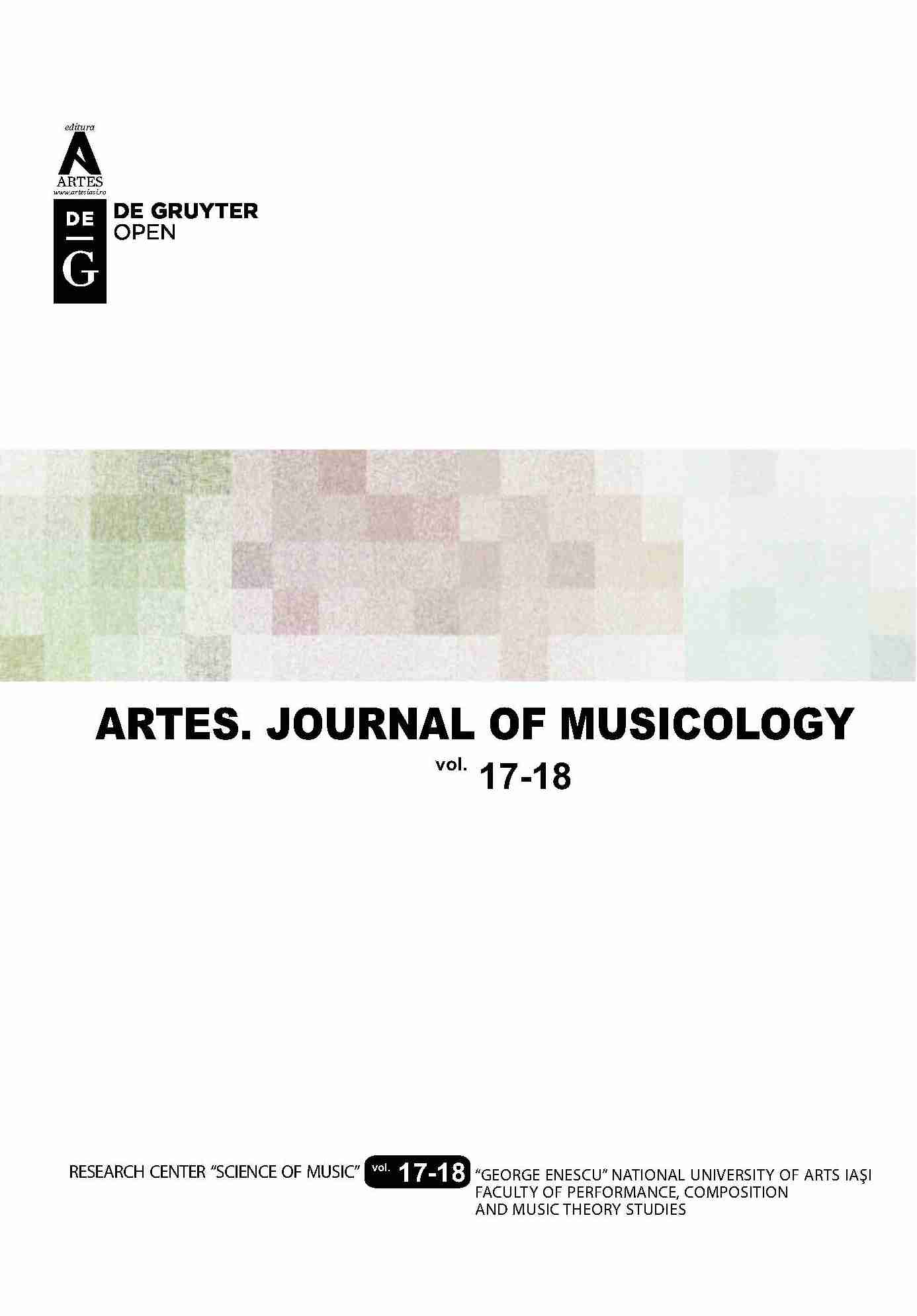Decoding the Musical Message via
the Structural Analogy between Verbal and
Musical Language
Decoding the Musical Message via
the Structural Analogy between Verbal and
Musical Language
Author(s): Rosina Caterina FilimonSubject(s): Fine Arts / Performing Arts, Music
Published by: Editura ARTES
Keywords: musical perception;decoding the musical message;verbal and musical language;cognitive psychology.
Summary/Abstract: The topic approached in this paper aims to identify the structural similarities between the verbal and the musical language and to highlight the process of decoding the musical message through the structural analogy between them. The process of musical perception and musical decoding involves physiological, psychological and aesthetic phenomena. Besides receiving the sound waves, it implies complex cognitive processes being activated, whose aim is to decode the musical material at cerebral level. Starting from the research methods in cognitive psychology, music researchers redefine the process of musical perception in a series of papers in musical cognitive psychology. In the case of the analogy between language and music, deciphering the musical structure and its perception are due, according to researchers, to several common structural configurations. A significant model for the description of the musical structure is Noam Chomsky’s generative-transformational model. This claimed that, at a deep level, all languages have the same syntactic structure, on account of innate anatomical and physiological structures which became specialized as a consequence of the universal nature of certain mechanisms of the human intellect. Chomsky’s studies supported by sophisticated experimental devices, computerised analyses and algorithmic models have identified the syntax of the musical message, as well as the rules and principles that underlie the processing of sound-related information by the listener; this syntax, principles and rules show surprising similarities with the verbal language. The musicologist Heinrich Schenker, 20 years ahead of Chomsky, considers that there is a parallel between the analysis of natural language and that of the musical structure, and has developed his own theory on the structure of music. Schenker’s structural analysis is based on the idea that tonal music is organized hierarchically, in a layering of structural levels. Thus, spoken language and music are governed by common rules: phonology, syntax and semantics. Fred Lerdahl and Ray Jackendoff develop a musical grammar where a set of generating rules are defined to explain the hierarchical structure of tonal music. The authors of the generative theory propose the hypothesis of a musical grammar based on two types of rules, which take into account the conscious and unconscious principles that govern the organization of the musical perception. The structural analogy between verbal and musical language consists of several common elements. Among those is the hierarchical organization of both fields, a governance by the same rules – phonology, syntax, semantics – and as a consequence of the universal nature of certain mechanisms of the human intellect, decoding the transmitted message is accomplished thanks to some universal innate structures, biologically inherited. Also, according to Chomsky's linguistics model a musical grammar is configured, one governed by well-formed rules and preference rules. Thus, a musical piece is not perceived as a stream of disordered sounds, but it is deconstructed, developed and assimilated at cerebral level by means of cognitive pre-existing schemes.
Journal: Artes. Journal of musicology
- Issue Year: 2018
- Issue No: 18
- Page Range: 154-163
- Page Count: 10
- Language: English

